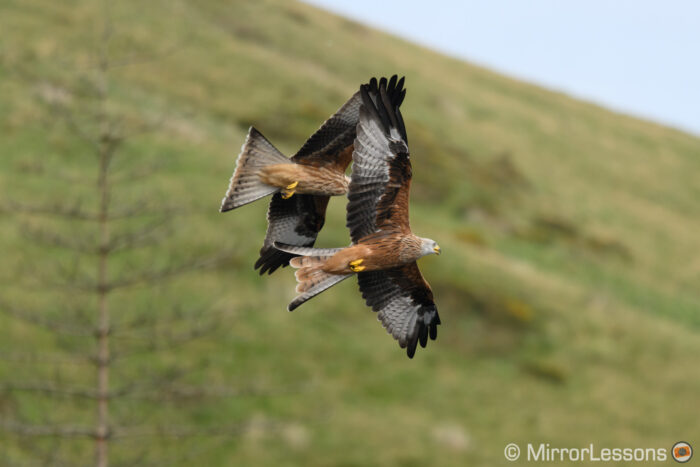The Z50 was the first APS-C mirrorless camera released by Nikon in 2019 and packs excellent ergonomics and autofocus performance in a compact and lightweight package.
The Z fc is not a successor, but a tribute to Nikon’s old film cameras as you can see from the images. On the inside, however, the hardware is the same as the Z50.
In this article, I’ll explain what the main differences are between these two APS-C cameras. But first, here is a quick summary of all the things they have in common:
- 20.9MP APS-C sensor (DX)
- Hybrid AF with 209 points, Eye AF for humans, cats and dogs
- 11fps of maximum continuous shooting
- 4K video up to 30p, 1080 up to 120p
- 0.39-in OLED EVF with 2.36M dots, 1.02x magnification and 19.5mm eyepoint
- 3.5mm mic input
- 1 SD card slot (UHS-I)
- Same battery (EN-EL25) with a CIPA rating of 300 shots per charge
- Webcam mode with Nikon’s Webcam Utility software
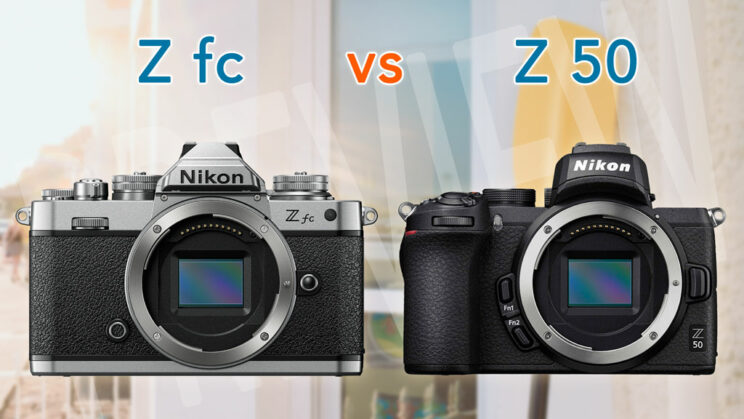
Ethics statement: the following is based on our personal experience with the Z50, and official information about the Z fc. We were not asked to write anything about these products, nor were we provided any other compensation of any kind. Within the article, there are affiliate links. If you buy something after clicking one of these links, we will receive a small commission. To know more about our ethics, you can visit our full disclosure page. Thank you!
1. Design
The main difference between the Z fc and Z50 is the design.
The Z fc is a tribute to the Nikon Fm2 SLR film camera which was released in 1982. The resemblance is striking, with Nikon having carefully copied most of its aesthetics including the pentaprism on top (which is obviously fake on the Z fc but houses the electronic viewfinder) and the Nikon logo that is reminiscent of the one used in the 70s and 80s.
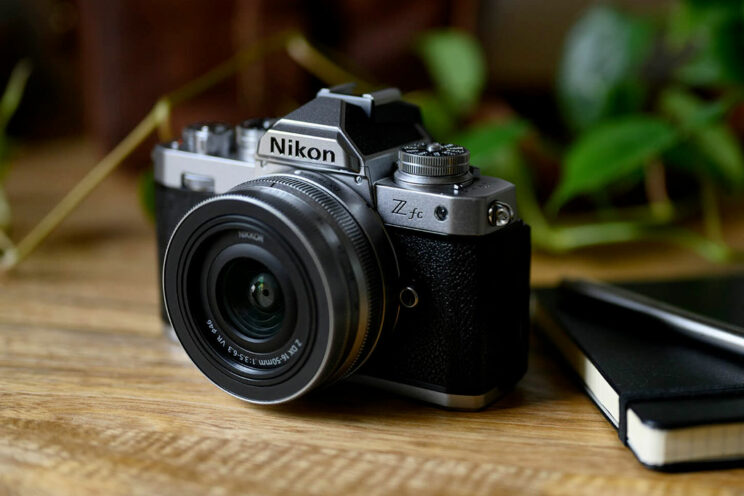
On top you will find old-school exposure dials for the ISO and shutter speed, and an exposure compensation dial. Here as well the look closely resembles Nikon’s film camera. The ISO dial works in 1/3 steps, whereas the shutter speed dial works in 1 Ev steps. However, there is a 1/3 position that allows you to change the shutter speed in smaller increments with the rear command dial.
Another iconic detail from the past is the presence of a small display panel that shows the aperture in use.

Despite the vintage appearance, Nikon made sure to include a PSAM lever that also allows you to switch to full Auto mode, as well as buttons and a pad on the rear that should be a familiar sight if you use today’s Nikon cameras.
The Z50 has a modern appearance by contrast, with a good sized front grip. It looks like other Nikon Z models such as the Z5, Z6 and Z7, albeit in a smaller package. It has a default shooting mode dial on top, and twin dials to control the exposure. Exposure compensation is controlled by the combination of a button plus the front or rear dial.
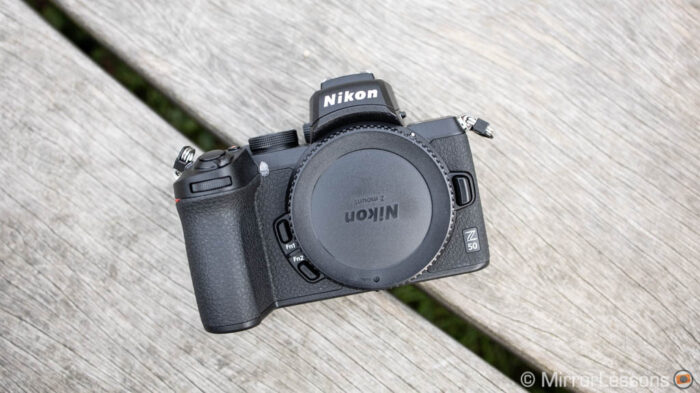
One nice thing about the Z50 is the presence of two function buttons on the front. There appears to be only one on the Z fc.
Concerning the build quality, they both have a magnesium alloy skeleton but no weather sealing. As for the dimensions, the Z fc is a a bit larger but the weight is similar:
- Z fc: 134.5 x 93.5 x 43.5 mm, 390g
- Z 50: 126.5 x 93.5 x 60 mm, 395g
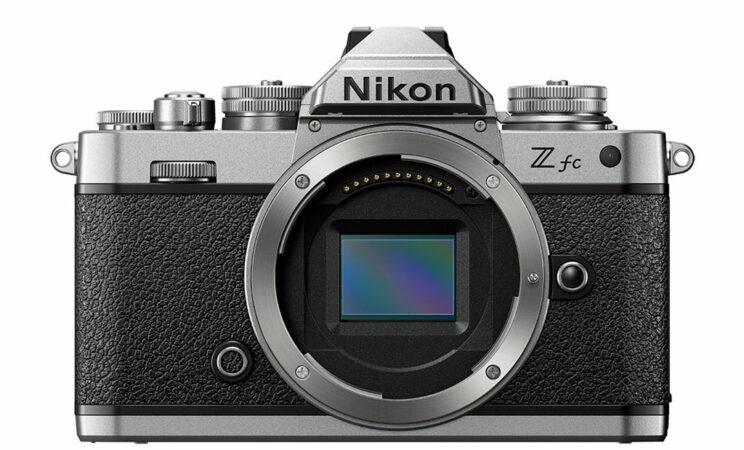
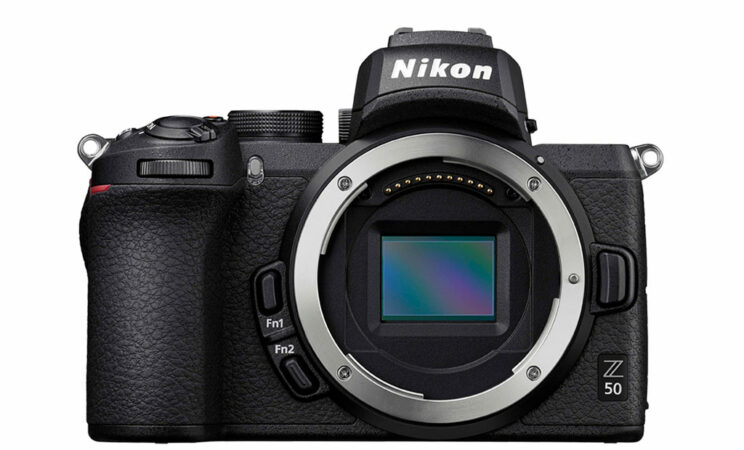

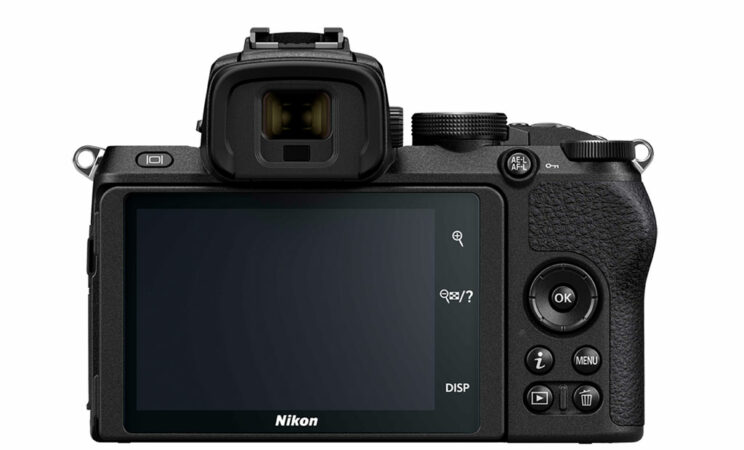


Finally, the Z fc is available in 7 colour combinations, whereas the Z50 can only be found in black.

2. LCD screen
The second main difference is the rear LCD screen.
On the Z fc, it is fully articulated so you can open it to the side and rotate it 180˚, which also gives you more flexibility when shooting vertically.

The Z50 has a tilting screen that goes down to 180˚ for selfies, but this solution prevents you from using the camera on a tripod.
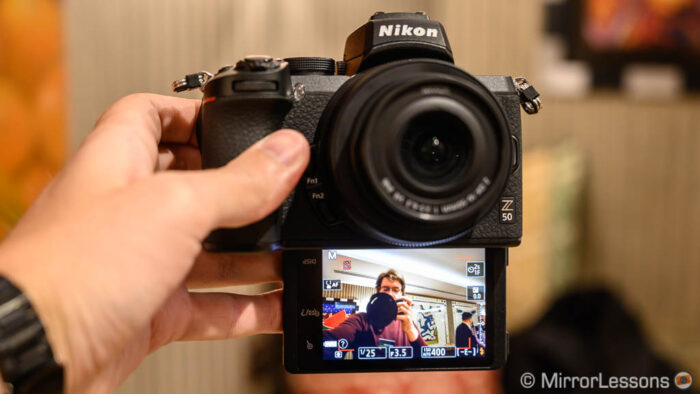
As for the specs, the Z50 monitor is a bit larger (3.2 vs 3.0 inches) but the resolution is the same (1.04M dots).
3. Autofocus
The autofocus system is the same for the most part. Both cameras have a hybrid AF with 209 phase detection points, and they have the same range of settings including Eye AF for humans and animals (dogs and cats).
The advantage of the Z fc is that you can use Eye AF with the Wide-Area AF L mode, in addition to the Auto-Area mode. Additionally, Eye detection should have the same algorithm of the Z6 II and Z7 II, meaning it should be faster and more accurate than the version found on the Z50.
If you’re curious to know more about the AF capabilities, check our birds in flight article!
4. USB Power Delivery
A welcome addition on the Z fc is the USB Type C port, which allows you not only to charge the battery when the camera is off, but also power it when it is in operation.
The Z50 has an old Micro USB 2 port, which only supports battery charging when the camera is turned off.
5. Price
Of course, the final difference worth talking about is the price.
The Z fc is available for $1100 or £1040 with the 16-50mm lens.
The Z 50 is older and can be found with the same lens for $1000, £850 or €990.
Note: prices as of the end of June 2021.
Conclusion
The Z fc has a lovely design, but it is difficult to understand if it’s only here as a tribute to Nikon’s history (like the Df full frame DSLR was) or if it’s the beginning of a new segment for the brand. I guess the number of sales will determine its future.

For now, choosing between the two cameras really comes down to the aesthetics, and possibly the lCD screen mechanism and USB power option if those two things are important to you. As for everything else, they are essentially the same camera.
I can’t conclude this article without pointing out that an old-style-looking mirrorless camera is not news: Fujifilm has build its X-series around this idea from the start, and showed it can be successful.
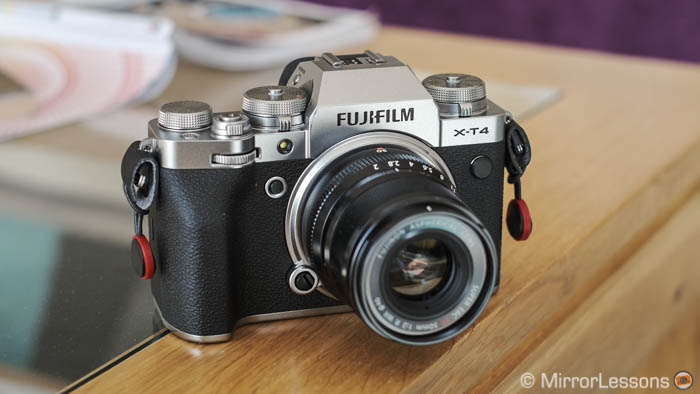
The design might turn Nikon and Fuji into direct competitors, but Nikon has one big limitation for now: the lenses. There are only two slow aperture zooms, a third in the works, and a special edition 28mm 2.8 made specifically for the camera (which is a full frame lens interestingly). It doesn’t even come close to the wider selection offered by Fujifilm. Certainly there are Nikon’s full frame Z lenses, but most of them are more expensive.
If Nikon is serious about building a DX system, the next step is to concentrate on compact, affordable and fast lenses.
Check price of the Nikon Z fc on
B&H Photo | eBay
Check price of the Nikon Z50 on
Amazon | Amazon UK | B&H Photo | eBay

